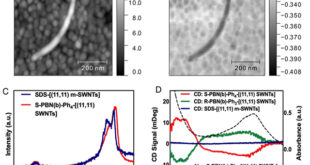Andrew J. L. Reszka1, Ryan C. Snyder1, Michael D. Gross2,3. J. Electrochem. Soc. 2014, volume 161,issue 12, F1176-F1183.
[expand title=”Show Affiliations”]1. Department of Chemical Engineering, Bucknell University, Lewisburg, Pennsylvania 17837, USA .
2. Department of Chemistry, Wake Forest University, Winston-Salem, North Carolina 27109, USA.
3. Center for Energy, Environment, and Sustainability, Wake Forest University, Winston-Salem, North Carolina 27109, USA. [/expand]
Abstract
A mechanistic model for the prediction of total and active three phase boundary density (TPB), in combination with effective conductivity, of infiltrated solid oxide fuel cell (SOFC) electrodes is presented. Varied porosities, scaffold:infiltrate size ratios, and pore:infiltrate size ratios were considered, each as a function of infiltrate loading. The results are presented in dimensionless form to allow for the calculation of any infiltrate particle size. The model output compares favorably to the available experimental result. The results show that the scaffold:infiltrate size ratio has the greatest impact on the TPB density, followed by the porosity and then the pore:infiltrate size ratio. The TPB density is shown to monotonically decrease with increasing scaffold:infiltrate and pore:infiltrate size ratios; however, it shows a maximum with respect to porosity. Each of these results are explained by examining the interfacial areas of each of the three phases as a function of the infiltrate loading. The model provides insight toward the rational design of infiltrated electrodes.
 Advances in Engineering Advances in Engineering features breaking research judged by Advances in Engineering advisory team to be of key importance in the Engineering field. Papers are selected from over 10,000 published each week from most peer reviewed journals.
Advances in Engineering Advances in Engineering features breaking research judged by Advances in Engineering advisory team to be of key importance in the Engineering field. Papers are selected from over 10,000 published each week from most peer reviewed journals.

